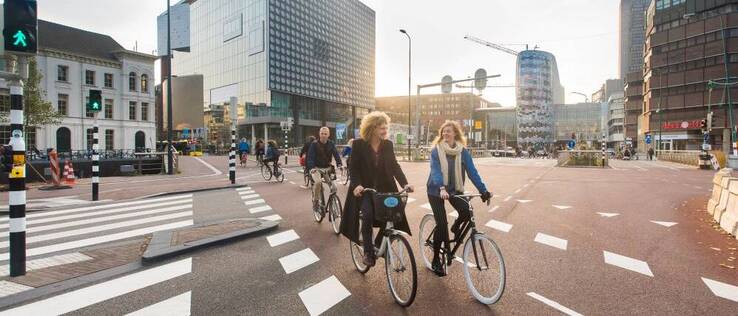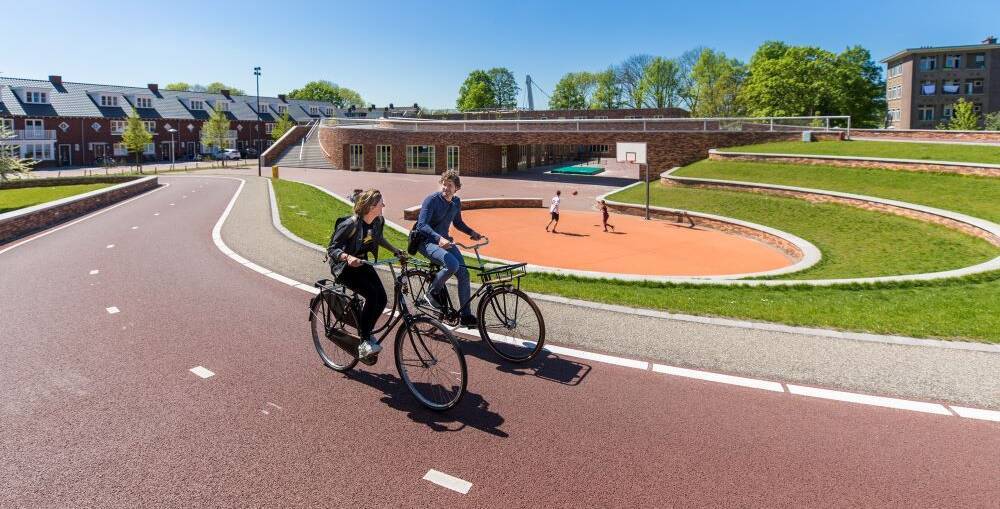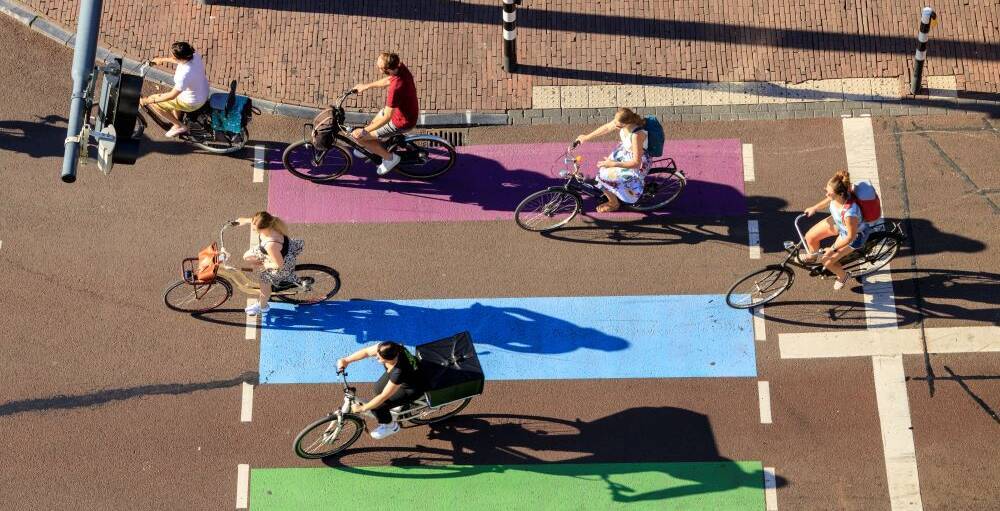Our policy on cycling

It is our ambition to create a city that is healthy, sustainable, accessible, liveable and attractive for each and everyone of us. A city that performs well in terms of quality of living, with clean air and reduced traffic noise, which contributes to a favourable climate for new inhabitants and businesses. In order to turn Utrecht into the ideal bike-friendly city, innovations are required.. By building the largest bicycle parking facility in the world and providing the first bicycle parking route, Utrecht is creating more space for bicycles and a better cycling experience.
Towards a vigorous bicycle city
Cycling represents freedom. It offers freedom for everybody to move through and around the city in a way that is convenient, pleasant and cheap. Utrecht was named ‘best cycling city in the world’. People of all ages are able to cycle safely. And even more people opt to use the bicycle to visit Utrecht and its neighbouring municipalities.
Utrecht has a population of 360.000 in 2022. The city is part of an urban area with over 700.000 inhabitants. It is an area with a huge growth potential for bicycle traffic. Therefore, we cooperate with our neighbouring municipalities and the province of Utrecht. About 60 percent of the working population lives less than 15 kilometers from their place of work and can go to work by bicycle. Across the entire province of Utrecht, we aim that by 2023 at least 50 percent of all trips up to 15 kilometers will be trips by bicycle.

Current policy
The city council considers cycling (and walking) as the most important means of transport in the city. Bicycle parking capacity is still extending. And we are building a network of major bicycle routes, connecting the city to the region. We are working on comfortable alternative routes to avoid the busier areas. Many pedestrian routes will be improved as well, starting with the city centre.
The Mobility Plan 2040
The mobility strategies are collected in our sustainable urban mobility plan for 2040. One of the main themes focuses on how Utrecht can and wants to develop in the fields of traffic and mobility, within the limited available space. For instance, the plan determines where cyclists and pedestrians can get more room and also, which routes are the fastest and most logical for cars and public transport. The plan also addresses how smart planning of public space can ensure that people walk or bike more often. Utrecht wants to be an attractive and easily accessible city that is great for living, working and leisure activities.
We are making the public space more attractive by reducing the number of parking spaces for cars on the street and by rearranging the layout of the roads. Ideally we want cars to park on the edge of the city centre and for cyclists to park their bicycle in one of the bicycle parking facilities on the edge of the pedestrian zone. This will create more space that can then be used to accommodate more green and playgrounds.
Create room for commerce, community, and social connection
As a medieval city that was originally built at a human scale, Utrecht refuses to offer up more space in favor of cars. Instead our goal is to create room for commerce, community, and social connection. However there is bygone major challenge: Utrecht is a rapidly growing city. The city has to facilitate a growth in mobility within the same limited public space and a denser built environment.
Maintaining the human scale in this fast-growing bicycle-friendly city
In order to maintain the human scale we have created a sustainable mobility plan that gives way to the most efficient modes of transport in terms of public space. This means that we prioritize pedestrians, cyclists and public transport. This transition resulted in a well-developed bicycle infrastructure and encourages us to take the next step in bicycle-friendly urban development. We work at home more often and travel outside of the rush hours more. Moreover, stores and facilities that offer sports, education, culture and green spaces will soon be accessible within 10 minutes. Having to travel less far means that we can walk or cycle to our destination more easily.
Cycling longer distances will become more appealing with a regional bicycle network consisting of wider bike paths and multiple routes to choose from.


